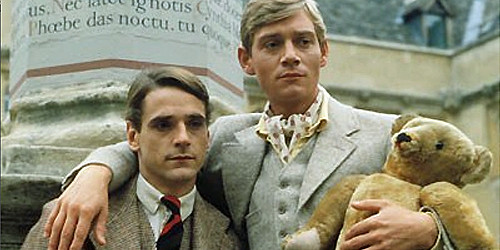
Introduction
British period dramas have long captivated audiences with their lavish costumes, intricate plots, and the charming world of tea and tradition. From the moody halls of Brideshead Revisited to the sizzling romance of Bridgerton, these productions have undergone a remarkable transformation, reflecting changes in societal norms and audience expectations. This article explores the evolution of British period dramas, examining how they have shifted over the decades and what this means for fans of the genre.
The Golden Age: Classic Adaptations
The era of classic adaptations marked the beginning of British period dramas as we know them. In the 1980s and 1990s, adaptations of literary masterpieces became a staple. The 1981 adaptation of “Brideshead Revisited,” based on Evelyn Waugh’s novel, is often heralded as a turning point. With its sweeping cinematography and rich storytelling, it captured the essence of British upper-class life between the wars.
These dramas were often characterized by their slow pacing and an emphasis on dialogue. The focus was on character development and intricate plots, allowing audiences to immerse themselves in the lives of the characters. Viewers were drawn into the blend of nostalgia and melancholy, with themes of love and loss woven seamlessly into the narrative.
The Rise of the Miniseries
As the 1990s progressed, the miniseries format became popular. Productions like “Pride and Prejudice” (1995) and “Emma” (1996) showcased the works of Jane Austen, bringing her sharp wit and social commentary to life. Colin Firth’s portrayal of Mr. Darcy became iconic, solidifying the charm of period dramas in the public imagination. These adaptations were often serialized, giving viewers a more extended and richer experience.
Miniseries also allowed for more in-depth exploration of characters and subplots, drawing audiences into the world of Regency England. The attention to detail in costume design and set production became paramount, making these adaptations not just viewing, but a visual feast for the audience.
The New Millennium: A Fresh Perspective
The new millennium brought about changes in storytelling techniques and production values. The early 2000s saw a resurgence of interest in period dramas, with the BBC and other networks producing high-quality adaptations. The 2005 film adaptation of “Pride and Prejudice” directed by Joe Wright presented a fresh, modern take on the classic tale. With stunning cinematography and a more cinematic approach, it appealed to a broader audience, reinvigorating interest in period dramas.
The Influence of Social Changes
As society evolved, so too did the themes explored in period dramas. The late 2000s and 2010s saw an increasing focus on issues of class, gender, and race. Series like “Downton Abbey,” which premiered in 2010, offered a multi-dimensional view of British life, intertwining the stories of both the aristocracy and their servants. The show’s success revealed a hunger for narratives that broke from traditional molds, showcasing a more complex social landscape.
Downton Abbey was also notable for its juxtaposition of historical events with personal stories, allowing viewers to connect emotionally with the characters while still being grounded in the historical context. This blending of personal and political made it relatable to modern audiences, highlighting how far society had come since the early 20th century, while still reflecting ongoing struggles.
The Streaming Revolution: A New Era
The advent of streaming platforms has revolutionized the landscape of British period dramas. With the ability to binge-watch entire seasons, viewers no longer have to wait week by week for new episodes. This change has allowed for more ambitious storytelling, giving creators the freedom to explore deeper narratives and character arcs.
Bridgerton, which premiered on Netflix in December 2020, is a prime example of this new wave in period dramas. Based on Julia Quinn’s novels, the show blends Regency-era romance with modern sensibilities, creating an engaging and diverse narrative. The series challenges traditional tropes, featuring a racially diverse cast and addressing themes of empowerment, sexuality, and social mobility.
Bridgerton’s success showcased that audiences were ready for a fresh take on period dramas—one that allowed for romance, intrigue, and a touch of scandal. It demonstrates how period dramas can evolve while remaining true to their roots, offering both nostalgia and a contemporary lens.
The Role of Diversity
One of the most significant evolutions in recent period dramas is the increased emphasis on diversity, both in casting and storytelling. Shows like Bridgerton have pioneered a new standard, demonstrating that historical narratives can be inclusive, offering a wider range of perspectives that were often overlooked.
This shift reflects broader societal changes and conversations about representation and equity. As audiences become more diverse, so too must the stories being told. The inclusion of characters from various backgrounds enriches the narrative, providing new dimensions and challenging preconceived notions about historical accuracy.
The Future of British Period Dramas
As we look to the future of British period dramas, it’s clear that the genre is poised for further evolution. With more platforms emerging and audience tastes continuing to shift, creators have the opportunity to push boundaries and explore new themes. The increasing popularity of adaptations from diverse authors and playwrights suggests that we may see a broader range of stories that reflect the complexity of society.
Moreover, as audiences become more global, period dramas can incorporate influences from beyond the British Isles, offering a multicultural perspective. The merging of different storytelling traditions could lead to fascinating new narratives that resonate across cultures.
Conclusion
The evolution of British period dramas is a testament to the genre’s resilience and adaptability. From the classic adaptations of the past to the vibrant, modern interpretations of today, these stories continue to captivate and inspire. As we move forward, the challenge—and the excitement—lies in how these dramas will continue to evolve, reflecting not just the past, but also the dynamic world we live in. The journey from Brideshead to Bridgerton illustrates a remarkable transformation, and fans can look forward to the endless possibilities that lie ahead in the realms of period drama.
Discover more from Anglotees
Subscribe to get the latest posts sent to your email.
